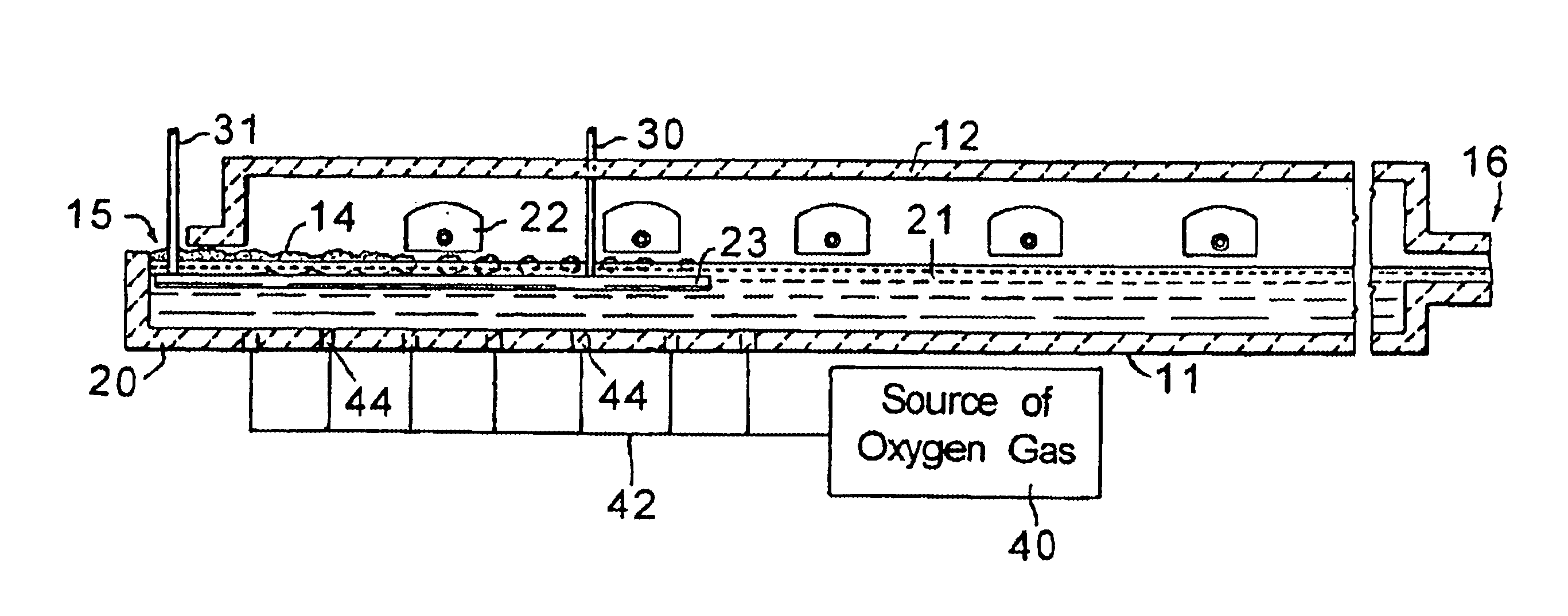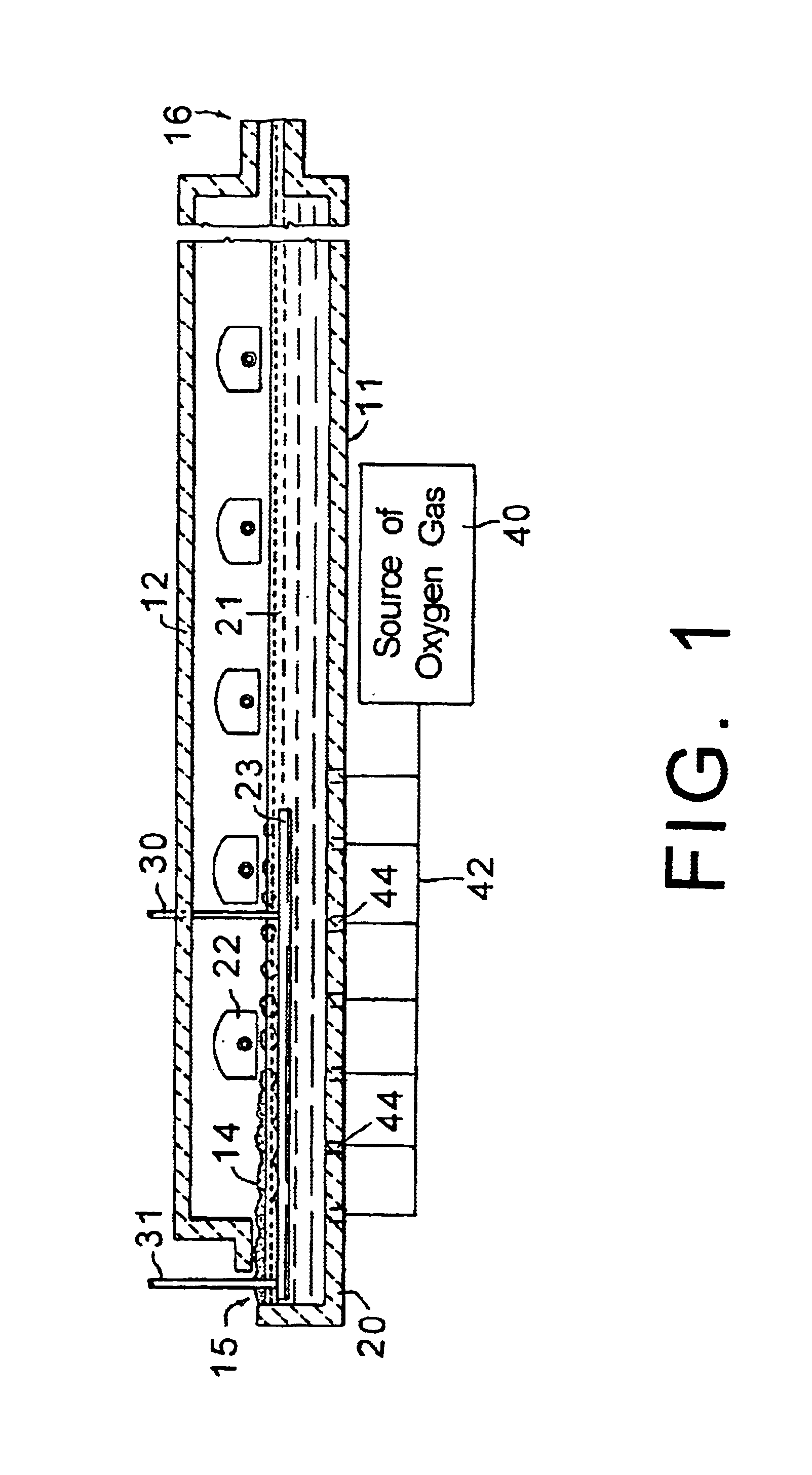Method of making glass, a method and device for the control and setting of the redox state of redox fining agents in a glass melt
- Summary
- Abstract
- Description
- Claims
- Application Information
AI Technical Summary
Benefits of technology
Problems solved by technology
Method used
Image
Examples
Embodiment Construction
Referring to FIG. 1, there is illustrated a horizontal cross-sectional view of a conventional, continuously fed, cross-tank fired, glass melting furnace having an enclosure formed by a bottom 11, roof 12, and sidewalls 13 made of refractory materials. Glass batch material 14 is introduced through inlet opening 15 in an extension 20 of the furnace known as the fill doghouse. The batch may be introduced intermittently by feeding means (not shown) to form a ridged blanket floating on the surface of the molten glass 21 as shown, or it may be fed continuously to form a uniform blanket. Usually the most effective practice is to feed the batch across approximately the central two-thirds of the furnace width so as to concentrate the unmelted batch in the hottest regions of the furnace and to initially space the batch from the sidewalls. With the extra protection of the sidewalls provided in this embodiment, the blanket may, in some cases, be located closer to the sidewalls if thermal condit...
PUM
| Property | Measurement | Unit |
|---|---|---|
| Percent by volume | aaaaa | aaaaa |
| Percent by volume | aaaaa | aaaaa |
| Volume | aaaaa | aaaaa |
Abstract
Description
Claims
Application Information
 Login to View More
Login to View More - R&D
- Intellectual Property
- Life Sciences
- Materials
- Tech Scout
- Unparalleled Data Quality
- Higher Quality Content
- 60% Fewer Hallucinations
Browse by: Latest US Patents, China's latest patents, Technical Efficacy Thesaurus, Application Domain, Technology Topic, Popular Technical Reports.
© 2025 PatSnap. All rights reserved.Legal|Privacy policy|Modern Slavery Act Transparency Statement|Sitemap|About US| Contact US: help@patsnap.com



